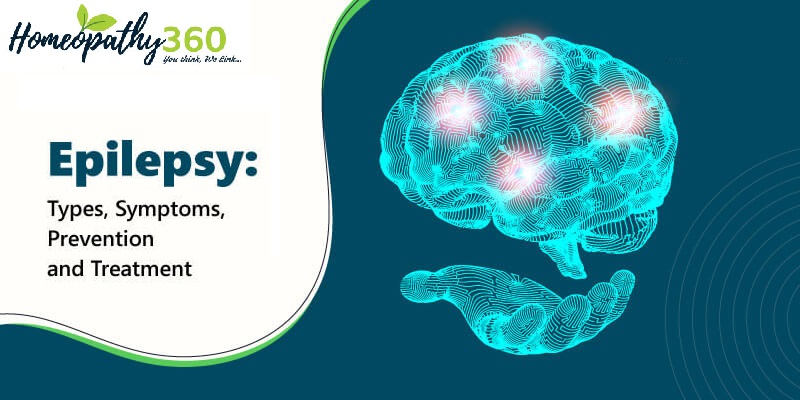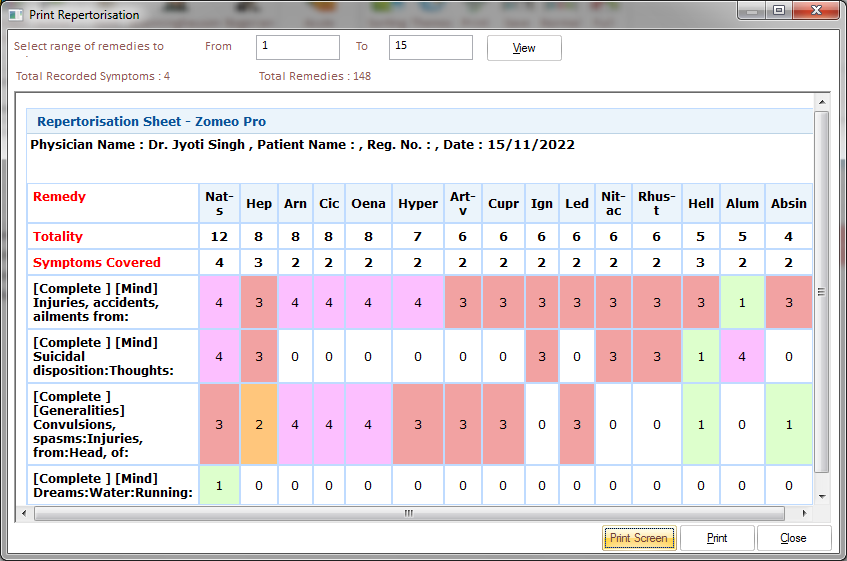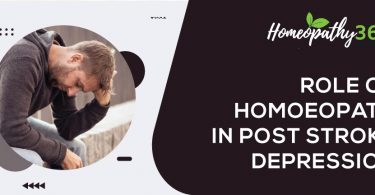
Abstract – Epilepsy is a chronic noncommunicable disease of the brain that affects around 50 million people worldwide. It is characterized by recurrent seizures, which are brief episodes of involuntary movement that may involve a part of the body (partial) or the entire body (generalized) and are sometimes accompanied by loss of consciousness and control of bowel or bladder function. . A Case of epilepsy treated with Homoeopathy is presented. This is case of 28 years old male with epilepsy since 10 years which had on allopathic treatment since 10 years. He received several homoeopathic medicines with no effect until he finally received the medicine Nat. Sulph.200 to 10M potency.. Through this case we are able to appreciate the importance of Homoeopathic similimum which give relief to the patient.
Keywords – Epilepsy, Seizures, Convulsion, Natrum sulph, Homoeopathy.
Introduction –The term ‘epilepsy’ comes from a Greek word meaning ‘to take hold of‘hence the use of term ‘seizure‘to describe its effects. Epilepsy may also be looked upon as a tendency to have repeated seizures. The seizures are an outward, visible sign that a part of the brain is not working as it should. Its activity of transmitting and receiving electrical and chemical messages becomes disrupted.3
Epilepsy is a chronic noncommunicable disease of the brain that affects around 50 million people worldwide. It is characterized by recurrent seizures, which are brief episodes of involuntary movement that may involve a part of the body (partial) or the entire body (generalized) and are sometimes accompanied by loss of consciousness and control of bowel or bladder function. Seizure episodes are a result of excessive electrical discharges in a group of brain cells. Different parts of the brain can be the site of such discharges. One seizure does not signify epilepsy (up to 10% of people worldwide have one seizure during their lifetime). Epilepsy is defined as having two or more unprovoked seizures.1
Cause of Epilepsy by Age Group
New born
Lack of oxygen or traumatic brain injury during delivery
Abnormal brain development
Metabolic disorder
Infant and Children
Fever
Infection
Brain tumor
Head trauma
Genetic disorder
Adults
Head trauma
Brain tumor
Stroke ( most common in elderly ) Brain scarring
Abnormal brain development
Epilepsy is not contagious. Although many underlying disease mechanisms can lead to epilepsy, the cause of the disease is still unknown in about 50% of cases globally. The causes of epilepsy are divided into the following categories: structural, genetic, infectious, metabolic, immune and unknown. Examples include:
-Brain damage from prenatal or perinatal causes (e.g. Loss of oxygen or trauma during birth, low birth weight);
-Congenital abnormalities or genetic conditions with associated brain malformations;
-A severe head injury;
-A stroke that restricts the amount of oxygen to the brain;
-An infection of the brain such as meningitis, encephalitis or neurocysticercosis,
-Certain genetic syndromes; and
-A brain tumor.
Sign and Symptoms;
Characteristics of seizures vary and depend on where in the brain the disturbance first starts, and how far it spreads. Temporary symptoms occur, such as loss of awareness or consciousness, and disturbances of movement, sensation (including vision, hearing and taste), mood, or other cognitive functions.
-People with epilepsy tend to have more physical problems (such as fractures and bruising from injuries related to seizures), as well as higher rates of psychological conditions, including anxiety and depression.1
Types- Epilepsy is divided into 2 basic types.
1- Generalized Seizures
2- Partial focal seizures
Generalized seizures – These seizures usually occur without any warning, becoz of abnormal electrical impulses in the brain. These are 6 types
1- Grand-mal (tonic-clonic)seizures
2-Petit-mal (absence) seizures
3- Clonic seizures
4- Tonic seizures
5- Myoclonic seizures
6- Akinetic or Atonic seizures
Investigations – After occurrence of first seizure, immediate cerebral imaging with CT or MRI is advisable. Other investigations for infective, toxic and metabolic causes may be appropriate . An EEG performed immediately after a seizure may be more helpful in showing focal features than if performed after a delay . In a situation where more than one seizure has occurred, an EEG is often useful in establishing the type of epilepsy and to guide therapy.2
Treatment
Seizures can be controlled. Up to 70% of people living with epilepsy could become seizure free with appropriate use of antiseizure medicines. Low-cost treatment is available, with daily medication. Discontinuing anti-seizure medicine can be considered after 2 years without seizures and should take into account relevant clinical, social and personal factors. A documented etiology of the seizure and an abnormal electroencephalography (EEG) pattern are the two most consistent predictors of seizure recurrence.1
Case – A 28 years old male name Rohit Singh visited in O.P.D of NHMC, Gomti Nagar, Lucknow on 4 December 2019 with the complaint of Epilepsy.
Presenting complaints –
- Convulsion at any time (during eating, bathing, sleeping, walking,) since August 2007.
- At the time of convulsion, uncontrollable jerking movements of both legs and hands, frothing of mouth and loss of consciousness.
- At time of convulsion injury on the body.
- Always fear of convulsion.
- After convulsion pt.become unconscious for 10-15 hours and extreme weakness, recover after 15 days to 1 month.
- Weakness of memory since 2 years,
- Forgetfulness , confusion
- Headache (Whole head) agg by noise.
Past history-
Head injury in November 2006.
Medical History–
Take allopathic medicine since 2007
Investigations-
C.T Scan and M.R.I – Normal study
E.E.G – Abnormal E.E.G Record
Physical Generals
Desire – Spicy things
Aversion – Nothing
Thermal – Hot
Thirst – Thirst less
Sleep – Normal
Dreams – Dreams of running water
Perspiration – Profuse, not any specific parts and no any particular smell.
Sensitivity – NAD
Stool – NAD
Urine – NAD
Family History
Father – Alive, Abdominal complaints
Mother – Alive, Osteoarthritis
Mental Generals-
Company aversion
Fear of crowd , Fear of people , Fear of society
Suicidal thoughts.
Anger – not marked
Introverted
Very strong memory before injury
Wants to live alone
Ambitious, wants to go in army
Attachment more from his mother
Rubrics taken-
Mind, Ailment from – injuries, accidents, mental symptom from
Mind – suicidal disposition – thoughts
Mind- Dreams –water: Running
Generals – Convulsions – injuries, after – Head, of the
Repertorisation-

Choice of remedy – Nat. sulph is the remedy of choice because head injury in past history is its characteristics.
Follow-Up-
IST Visit – 4/12/2019 – Nat. sulph.-200/1 dose
S.L for 15 days
IInd Visit – 19/12/2019 – Less weakness after convulsion
– S.L for 1 month
IIIrd Visit – 8/1/2020 – No further improvement
Nat. sulph. -200/1dose
S.L for 1 month
4th Visit –19/2/2020 – no improvement
Nat. sulph – 1M/3dose
S.L for 1 month
5th Visit – 5/3/2020 – Feels better; Headache feels at site of injury, pt. feels nausea (old symptom)
Less weakness after convulsion
Convulsion timing become less as compare to old convulsion
Allopathic medicine half of a tablet, OD
S.L for 15 days.
6th VISIT – 18/3/2020
Frequency of convulsion increases but intensity of convulsion decreases.
Headache with nausea and vomiting.
Memory became normal.
Forgetfulness improves.
S.L for 3 month
7th Visit –During lockdown
Intensity of convulsion becomes less. No injury in body becoz pt. starts to feel aura of convulsion.
Headache improves.
S.L for 1 month
8th Visit – 20 June 2020
Convulsion intensity becomes less but no any further improvement.
Nat.sulph – 10M/1dose given
S.L for 1 month.
9th Visit – In September (on call)
Convulsion only for few minutes.
No weakness after the convulsion.
Headache better.
S.L continues for 2 month.
10th Visit- 16/10/2020
Convulsion better
No fear of convulsion
Forgetfulness improves.
Allopathic medicine half O.D
S.L continues for 2 months.
11TH VISIT– DECEMBER
Convulsion frequency increases.(16 times) but low intensity. No injury at the time of convulsion.
Memory good
Small warts almost disappear, old warts start to reduce.
S.L for 2 months
12th VISIT- 4/2/2021
Improvement in standstill condition
Nat. sulph-10M/1dose repeat
S.L for 1 month.
13th VISIT – 15 March 2021
Convulsion only for few seconds.
Memories become very sharp as before injury.
Pt. starts prepration for Gov. Job.
Allopathic medicine 1/4th of a tablet OD.
S.L for 2 months.
14th Visit – 17 August 2021
No any convulsion during this time period.
S.L for 2 months.
Conclusion – Homeopathy treats the person as a whole. It means that h homeopathic medicine for epilepsy focuses on the patient as a person, as well as his pathological condition. The homeopathic medicine for epilepsy are selected after a full individualizing examination and case-analysis, which includes the medical history of the patient, physical and mental constitution etc3.This case illustrates that homoeopathy controls the episodes in epileptic cases by eliminating the relapses and reduces the intensity of epilepsy.the patient can lead a normal life with no further episodes.
References;
- https://www.who.int/news-room/fact-sheets/detail/epilepsy.
- Mehak. Epilepsy and its management with homoeopathy: IJHS 2020; 4(4): 23-27.
- https://hpathy.com/cause-symptoms-treatment/epilepsy-treatment.
About the Author:
Dr. Jyoti Singh, Dr.Veer Bahadur Singh





